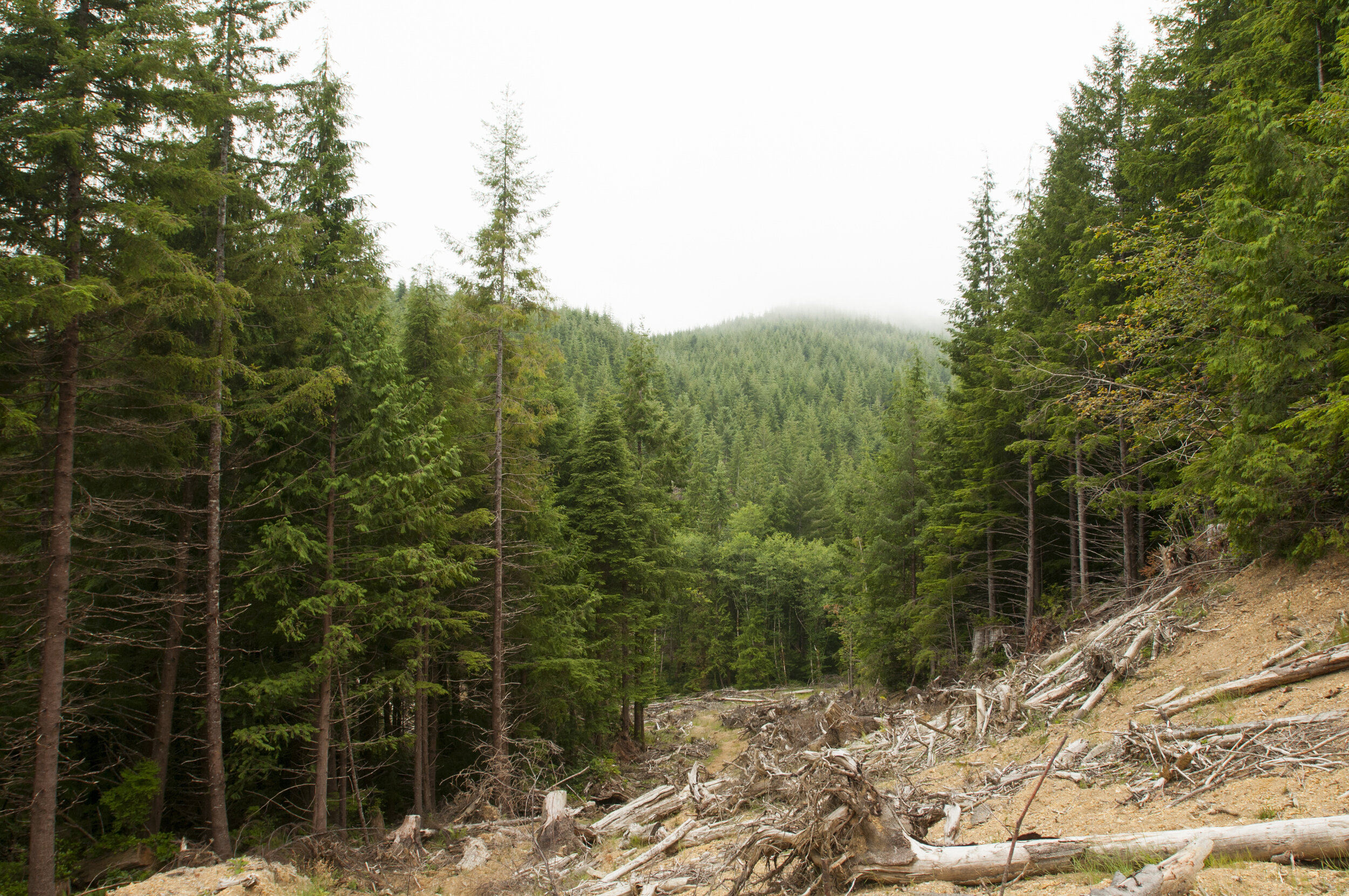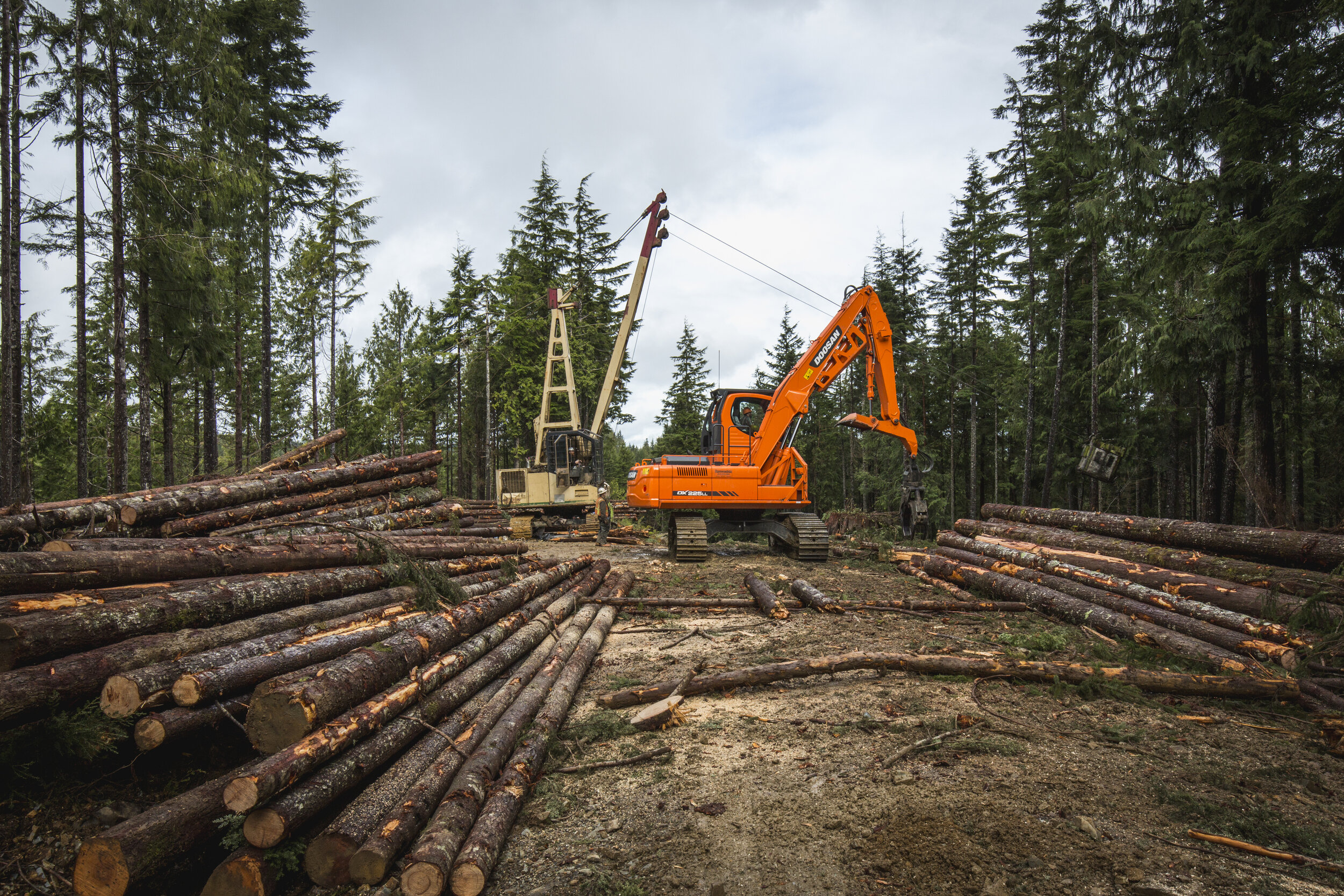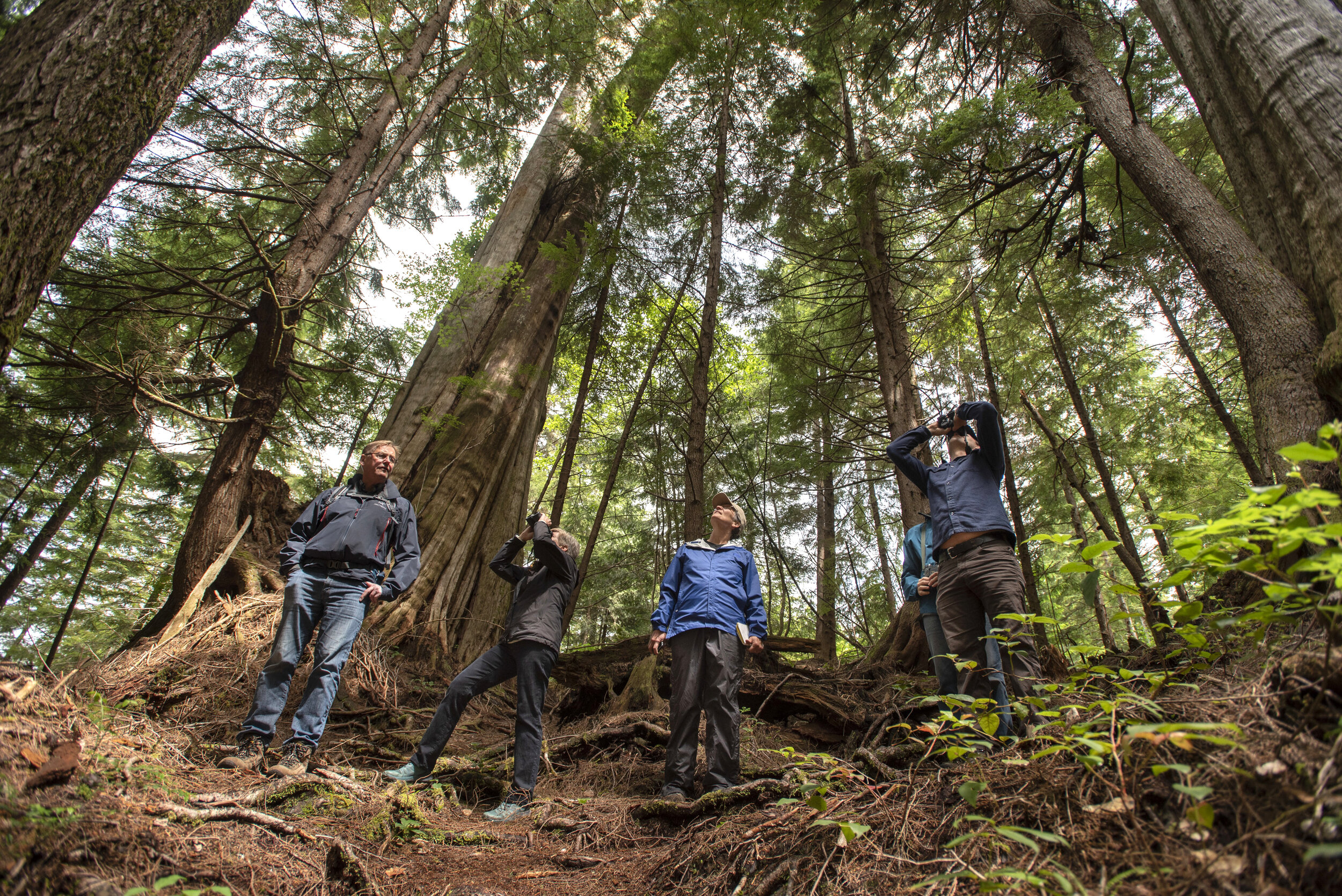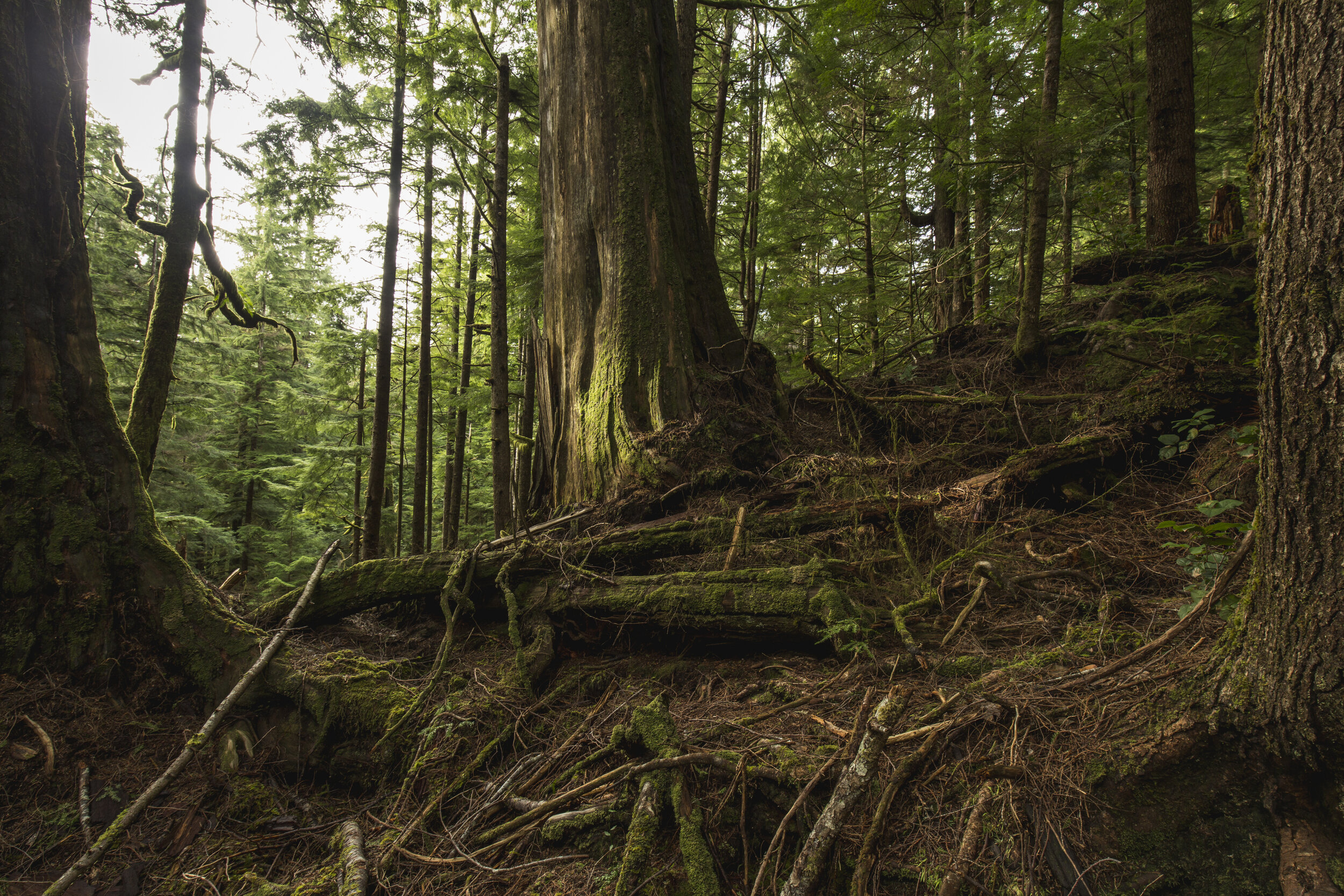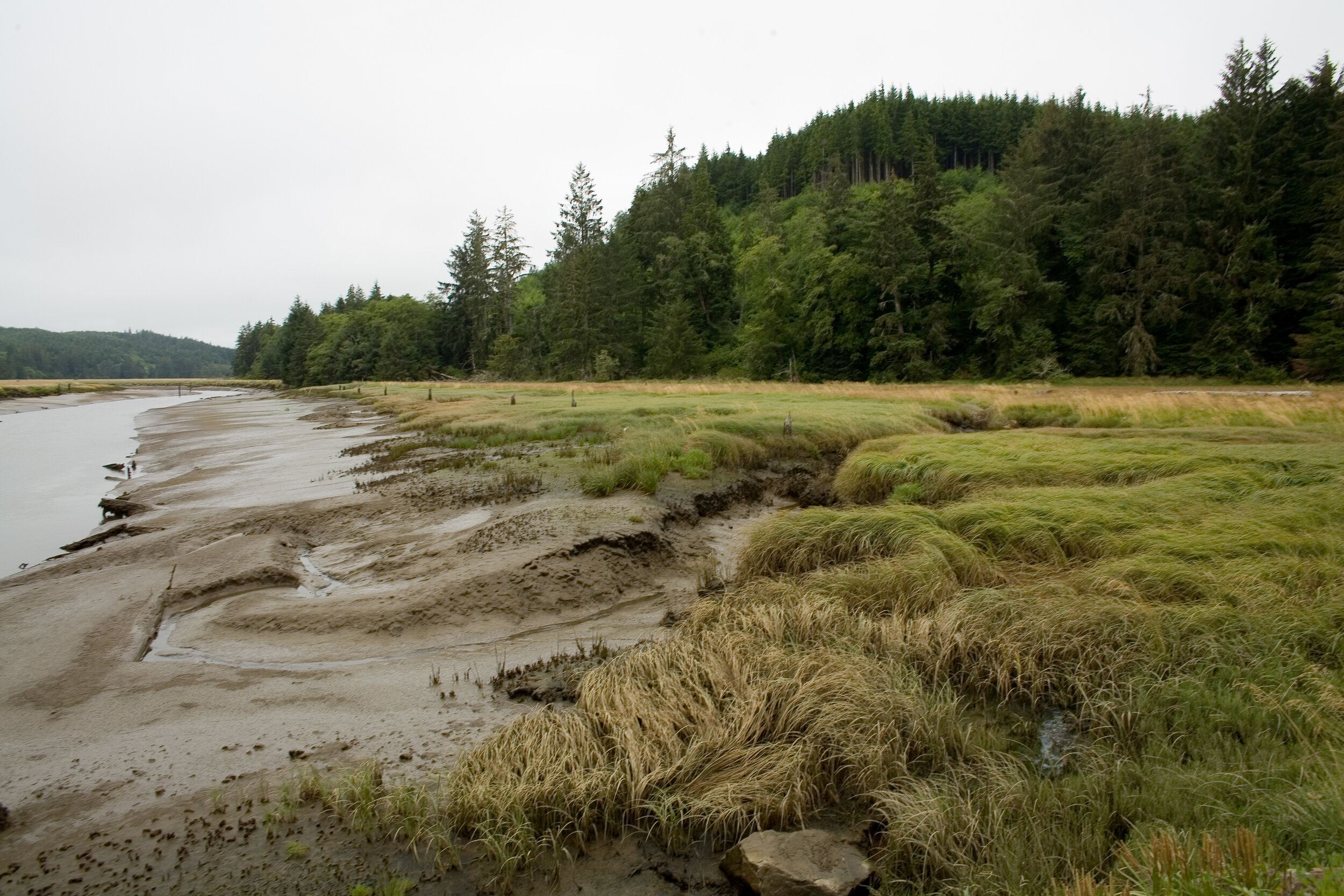By Michael Case, Forest Ecologist & Erica Simek Sloniker, Visual Content Specialist
Ellsworth Creek Preserve in Southwest Washington is a special place for many reasons. Nearly 8,000 acres in size, it encompasses an entire watershed from steep, forested ridges down to the marsh at Willapa Bay. The Nature Conservancy began purchasing this unique area in 2001 to protect old-growth forest, salmon, amphibians, birds and generally, the richness of life. But this is no ordinary nature preserve.
After Ellsworth Creek became a preserve, the watershed was strategically subdivided into experimental basins for scientific research forming a science laboratory in the forest. The preserve has enabled us to understand and test the success of our restoration actions over time on our way to restoring old growth on the coast.
The Nature Conservancy’s Ellsworth Creek Preserve
However, we face a big challenge at Ellsworth in bringing old growth forests back to these coastal slopes. Most of the watershed was previously logged multiple times with little old growth remaining. Since 2001, The Nature Conservancy has experimented with restoration techniques to help speed up the restoration of young, crowded trees back to old growth forests that lead to thriving fish, wildlife and clean water. Bridging our early efforts with those of today, we are applying a combination of cutting-edge technologies and old-school science to test the success of our restoration efforts to date.
It’s a big job, and thankfully we have help.
Together TNC scientists and foresters are working with collaborators from federal, state, tribal partners and universities to measure our success and answer core questions:
Can we restore old growth from past clear cuts?
Can we speed up the development of old-growth forests by thinning overly dense, young trees?
Can we improve streams and salmon habitat by removing unnecessary roads?
Can we restore forests cost effectively and help maintain local jobs?
Forest Management at Ellsworth Creek Preserve
To collect answers, three restoration approaches are used within the Ellsworth Creek watershed throughout the experimental basins.
Active Basin: TNC Foresters work with local logging contractors to commercially thin about 30 percent of trees, leaving uneven spacing and gaps that give trees room to grow at an accelerated rate and provide a diversity of habitat for many wildlife species. The thinned trees generate revenue to help pay for the restoration. The goal is to build a complex forest that mimics natural forest development from blowdowns and windstorms.
Active Basin
Passive Basins: Workers remove roads, but otherwise allow nature to take its course. The forest is not thinned. The goal in these forests is to reduce management costs and fragmentation from roads, and to see improved stream water quality and salmon habitat.
Passive Basin
Control Basins: Forest roads are maintained but the forest is left alone to develop without active forest management. It does not see road removal or logging. These forests offer a comparison to the active and passive basins where management could be changed in the future depending on what we learn.
Control Basin
Cutting-Edge Science at Ellsworth
Not only are we using restoration approaches to understand the watershed’s return to old growth, we are also applying a combination of cutting-edge technology to test our restoration assumptions about our success. Specifically, we are using genetic DNA found in the soil and airborne lasers to test how successful our restoration has been.
eDNA Collected from Soil
Environmental DNA (eDNA) samples were collected this year to detect the presence of threatened and endangered species, such as marbled murrelet and to quantify the presence of “healthy” soil microorganisms, such as nitrogen fixers, fungi and important soil microbes. We are using eDNA as a tool to answer whether our restoration actions in the active basins are accelerating forest development toward old growth habitat. The Nature Conservancy and a University of Washington Researcher have already collected soil samples across active, control, old-growth and clear-cut areas and are now in the stage of processing those samples to learn more.
In addition to collecting and processing eDNA samples, we are using Light Detection and Ranging (LiDAR) technology to further understand how the forests at Ellsworth are recovering. LiDAR is a tool that uses light in the form of a pulsed laser to measure distances to the Earth from an airplane. This data provides a picture showing us how our forest restoration forest thinnings have changed the different layers of vegetation within the forest and canopy development. LiDAR also helps us understand how much carbon is stored in trees and helps us to quantify changes since 2007, when LiDAR data were first collected at Ellsworth.
Future Work
Science is a big job at Ellsworth, so we are also working with our partners to investigate the following:
The effects of drought stress and how different types of forest-thinning practices could help make trees more resilient to future climate change
How forest thinning has affected the abundance of common and rare bird species
Using lichens as indicators of forest development and the effects of forest restoration treatments
The financial costs and benefits of different restoration treatments
Ellsworth Creek Preserve offers a unique opportunity to think big and test the successes (and failures) of our restoration efforts from the forested headwaters to the marshy estuary, where land meets the sea. Our science laboratory in the forest provides a window into how science, management, and economics can inform one another and provide us with critical information for informing how we restore old-growth forests now and into the future.







